Foraging for Wild Asparagus – Skip the Grocery Store Lines
RusDs 06.04.21
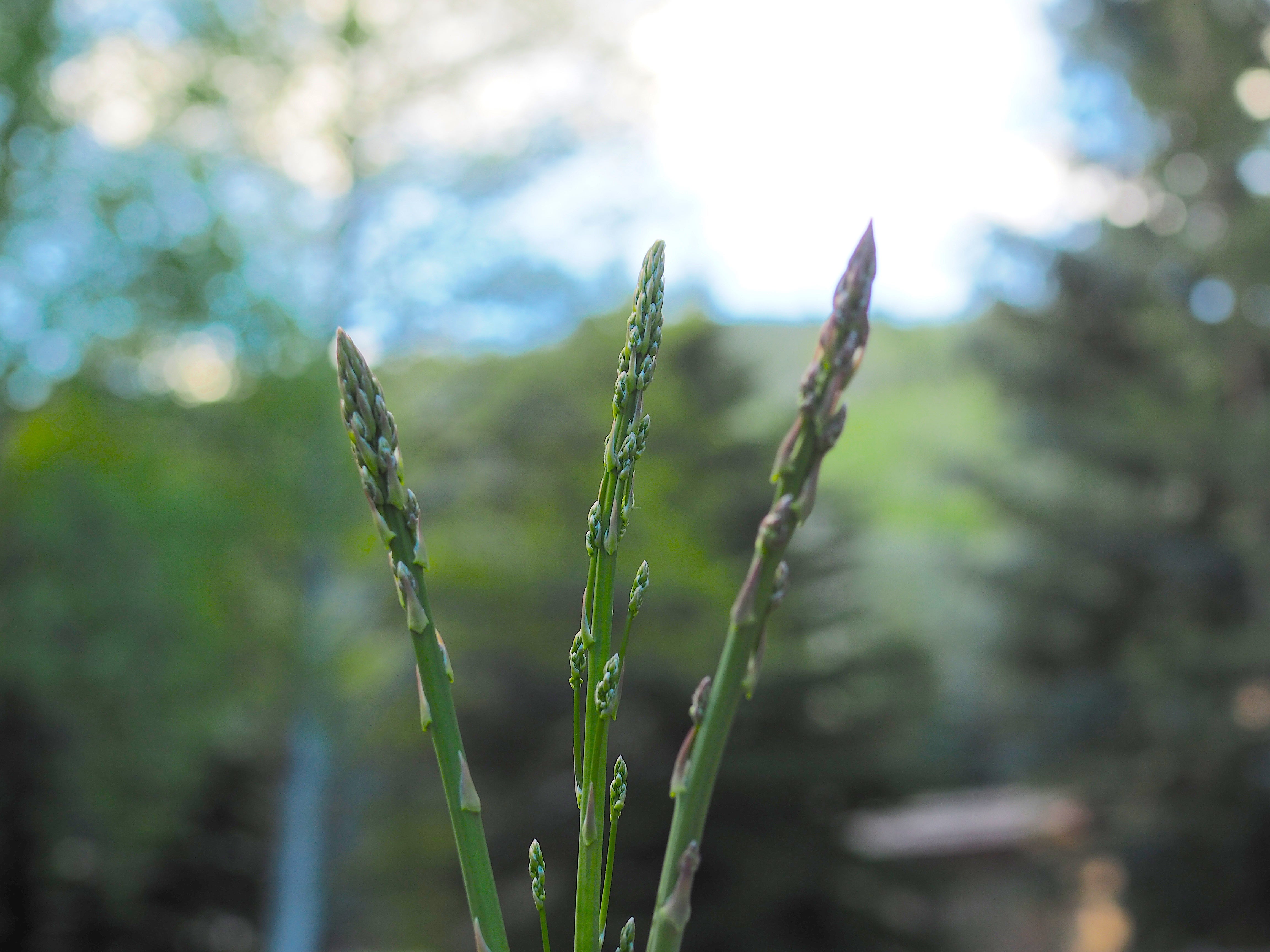
Foraging can be an excellent (and free) way to supplement your stock of edibles. It’s also usually a lot better exercise than going to the grocery store. Though I spend a majority of my time as a farmer cultivating and growing produce, and don’t have much time for foraging in the spring and summer; however, I have some friends who not only are some of the best produce gardeners I know, they are also enthusiastic, experienced foragers. They kindly offered to assist me in the creation of a few foraging articles, and today we will be talking about the identification, harvesting, and preparation of wild asparagus.
Wild Asparagus (Asparagus Officinalis) – Identification
Wild asparagus looks and is essentially the same as the asparagus one would find on a farm or in a grocery store, with the exception that it has “escaped cultivation” and has been deposited elsewhere, usually via the method of animal consumption and distribution of the seeds. Wild asparagus has a long, green stalk, and a purple or green scaly tip. In the early spring, one should see clusters of stalks. Later on, the plants will have wispy, fern-like growth from the top of the plant and may have tiny whitish-yellow flowers.
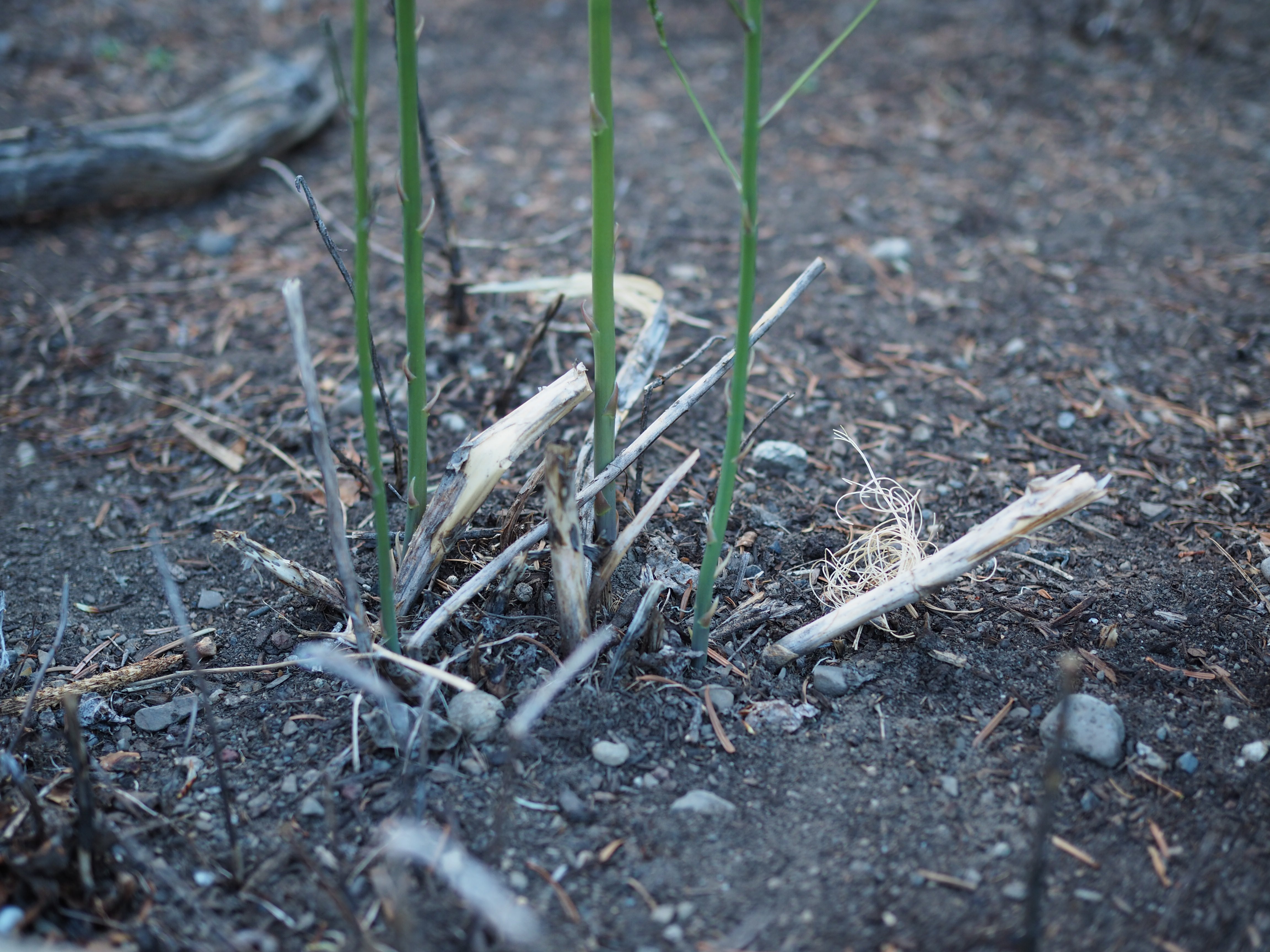
Asparagus is dioecious, meaning there are “male” and “female” asparagus plants. The female asparagus plants have to put a lot more energy and resources into reproduction, resulting in narrow, tougher, more bitter stalks. This reproductive process in female plants will produce reddish berries. DO NOT EAT the berries – they are toxic! The male plants usually have larger, more tender stalks, and are the more desirable of the two to harvest.
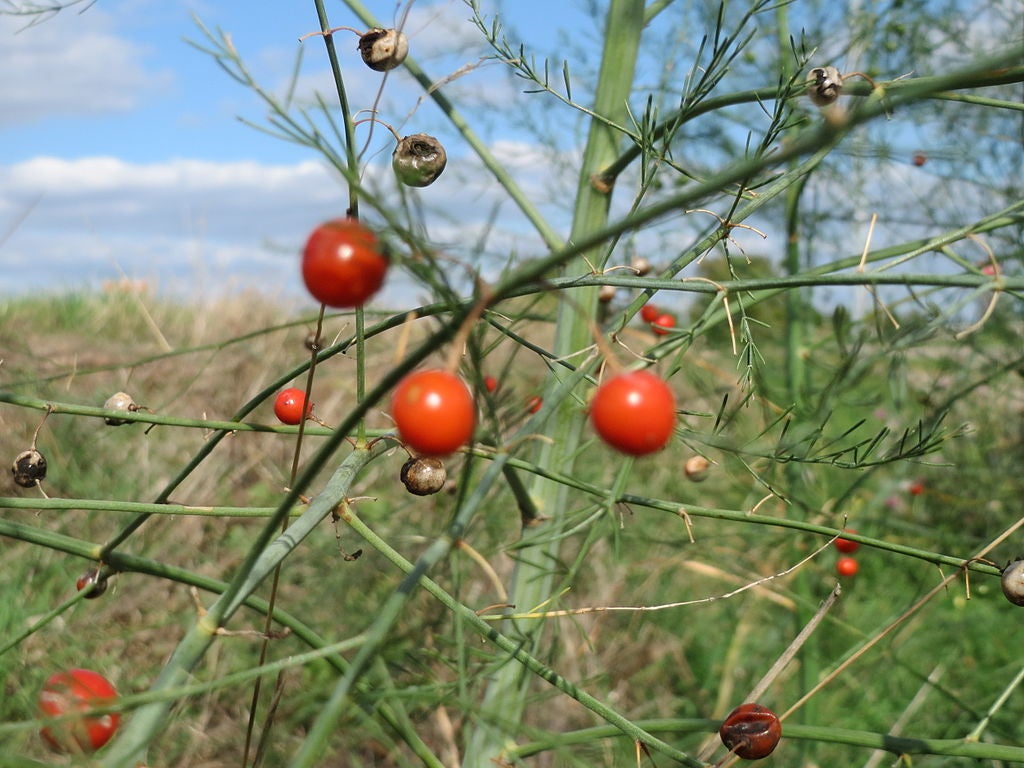
Harvesting Wild Asparagus
The hardest part of harvesting wild asparagus is the first step: finding them. As far as locating wild asparagus, some people look along the banks of drainage ditches or flood irrigation in farm country. My foraging friends, Hart and Mary, strongly advise against this practice, unless you are familiar with the source of the water and the farming practices of where the water is flowing through. This is due to the risk of concentrated farm runoff contaminating the wild veggies. Instead, my friends recommend looking in marshy meadows, near natural springs, above the banks of streams or rivers, and in sandy, loamy, black soil. They recommend being able to hear running water when searching for these plants.
Be on the lookout for this tasty and nutritious veggie if you hike along natural waterways or through marshes. Many times, this vegetable can be found by keeping your eyes peeled on the way to and from your favorite wilderness fishing spot. A good rule of thumb of selecting a good harvesting spot is to find a place that is free from garbage, farm runoff, crop overspray and other pollutants.
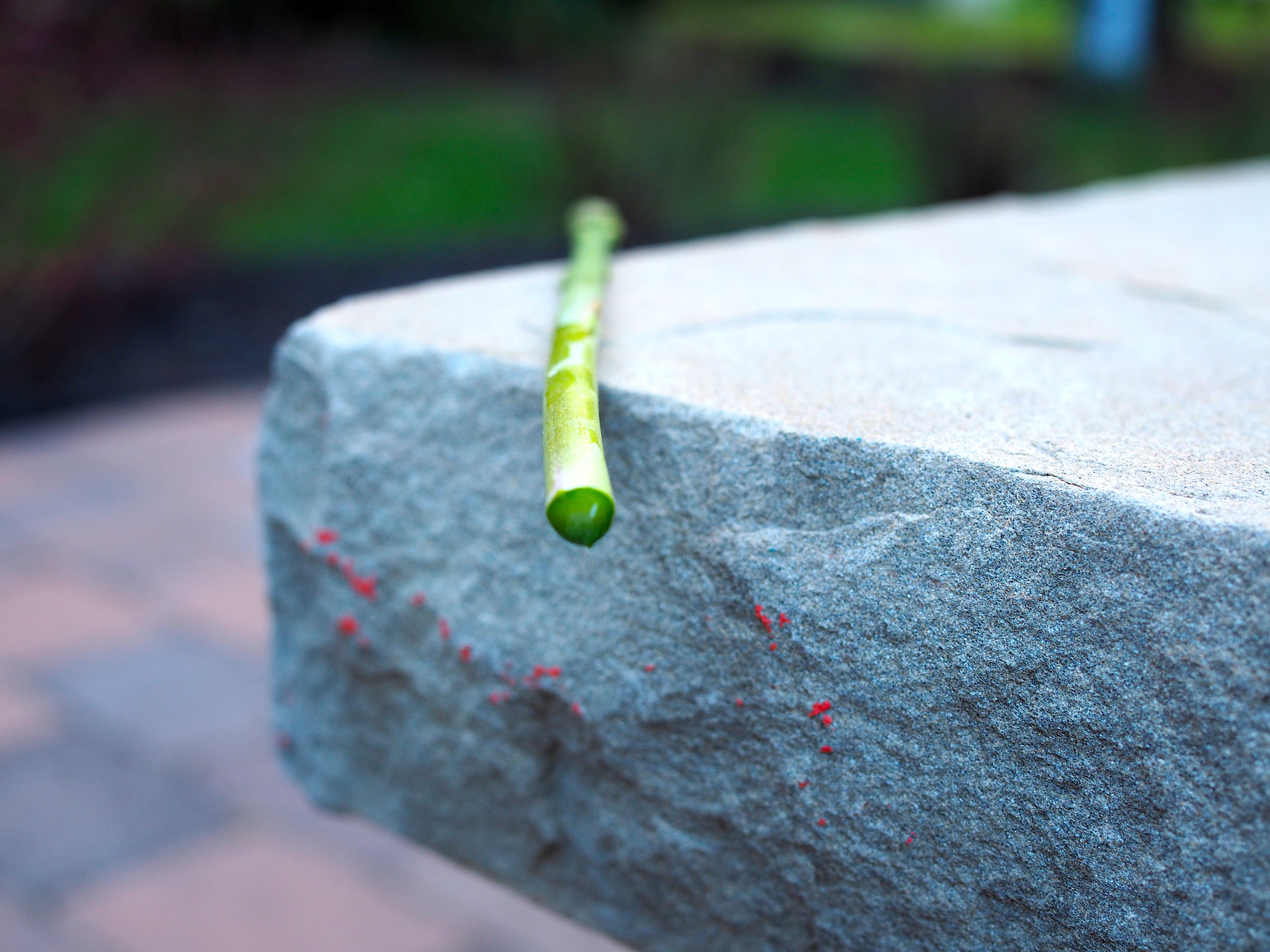
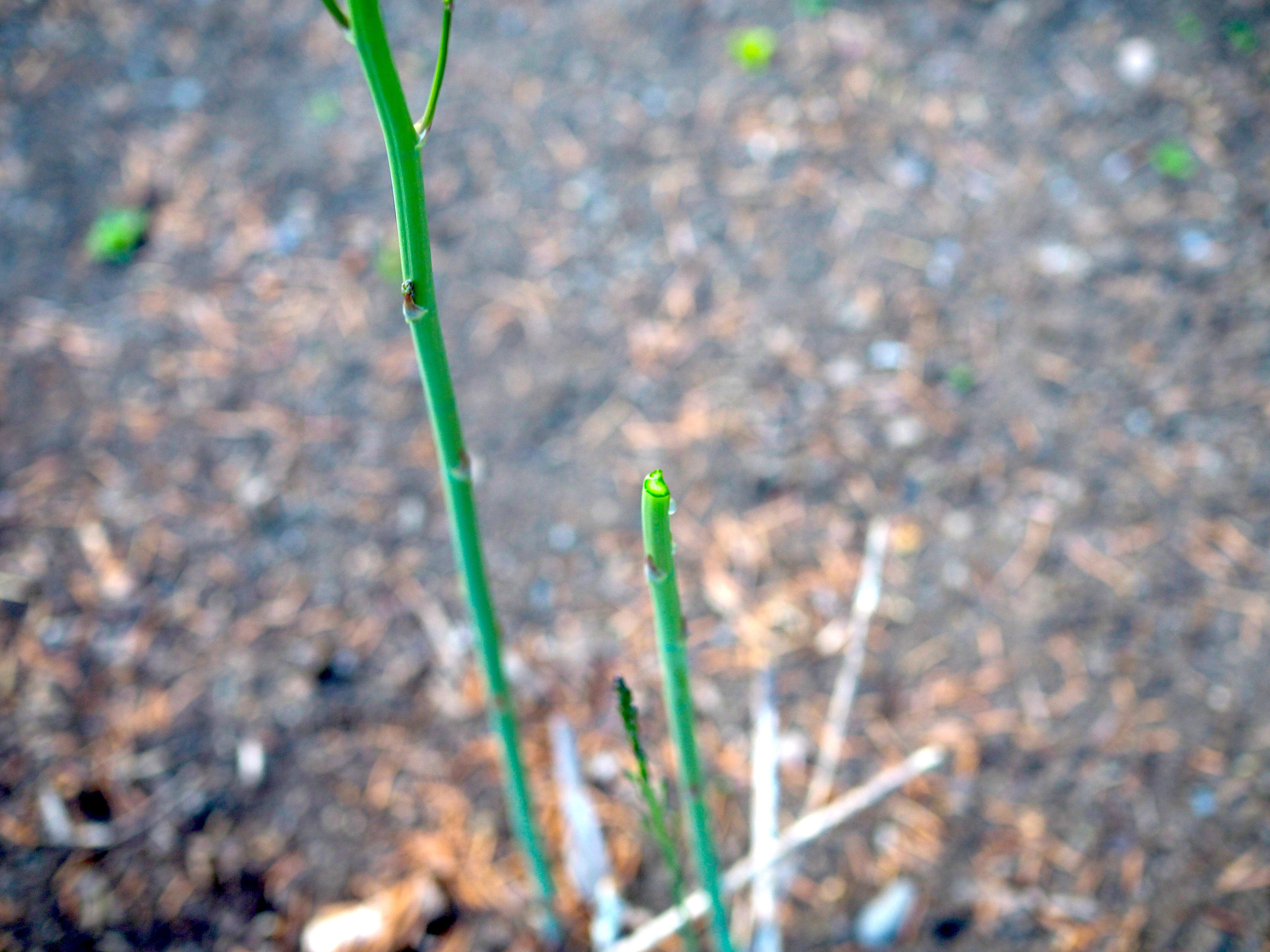
The best time to harvest wild asparagus is in the late springtime, before they have put energy into growing fronds or berries. As they are a perennial plant with a robust rhizome (the root or “crown”), one can cut them or snap them above ground, and the stalks may grow back. If cutting the stem, a standard Swiss army knife blade can work fine for this. The yellow (or sometime red) root rhizome can also be dug up and harvested and prepared into tinctures, teas, or chewed as a medicinal herb. A small hand trowel can aid in this particular pursuit.
Preparing Wild Asparagus
Wild asparagus can be eaten raw, but my friends caution against this and highly recommend cooking it. One doesn’t know the exact condition or what contaminants might be present on the plant or in the soil. A thorough washing and cooking will greatly diminish the risk of one falling ill from eating wild asparagus. Asparagus contains fiber, vitamin C, magnesium, and is also a good source of calcium, magnesium and iron. Here are a few of my favorite ways of eating wild asparagus:
- Chopped thin, sautéed in garlic oil, and integrated into a risotto.
- Lightly sautéed in olive oil with McCormick Montreal Steak or Chicken seasoning, as a side for a meat dish.
- Chopped into little rounds and sprinkled into a coconut milk, fish and rice curry before final steaming of the fish.
Wild asparagus can be an excellent addition to your springtime vegetable harvest. Next time you are on a walk through the woods or are on your way to or from your favorite fishing hole, keep your eyes peeled for this appealing wild vegetable. It would make for a great side dish alongside your spring hunting or fishing harvest.